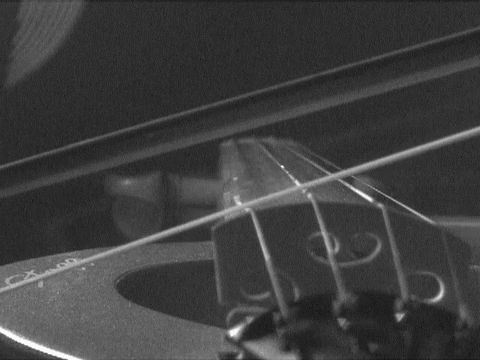Sound as a Wave

| Natural Frequencies and
Standing Waves |
| As a quick recap, we've
established that sound is the pressure wave caused by an
object vibrating in a fluid medium. Whenever any object is
struck, it tends to vibrate at a single frequency, or a
set of frequency, called the natural frequency. For
example, whenever you hit your head on your desk
repeatedly (a side effect of trying to make deadlines),
your desk it will make the same sound every time. Desks
tend to have a multitude of natural frequencies that
aren't related by whole number ratios, so the noise
produced is barely musical. In objects better known for their musical qualities, like musical instruments, fundamental frequencies are few and tend to relate to each other by special whole number ratios. Not only that, but it is very easy to change the fundamental frequency of musical instruments. For example, the length of individual strings could be changed on any stringed instrument. This implies a relationship between frequency and wavelength, which I will state in explicit terms. frequency = speed/wavelength Since we've covered natural frequencies and touched on vibrating strings, we flow into the topic of standing wave patterns very nicely. When an object vibrates at its natural frequency, a phenomena called a "standing wave" is formed. This happens when a wave travels at its natural frequency, reflects and changes direction, and collides with the wave that traveled in its old direction. This is best described with an image. A node is a point where a particle is at its undisturbed location. An antinode is a point where a particle is at a distance equal to the wave's amplitude away from its undisturbed location. The red wave is the resultant wave from the interference of the green and blue waves. When waves at an object's natural frequency interfere with each other, the result looks like this. This is a pictorial representation of standing wave patterns. The mathematics behind these are very interesting, and I would encourage you to check them out under the section "Harmonics and cool math" |